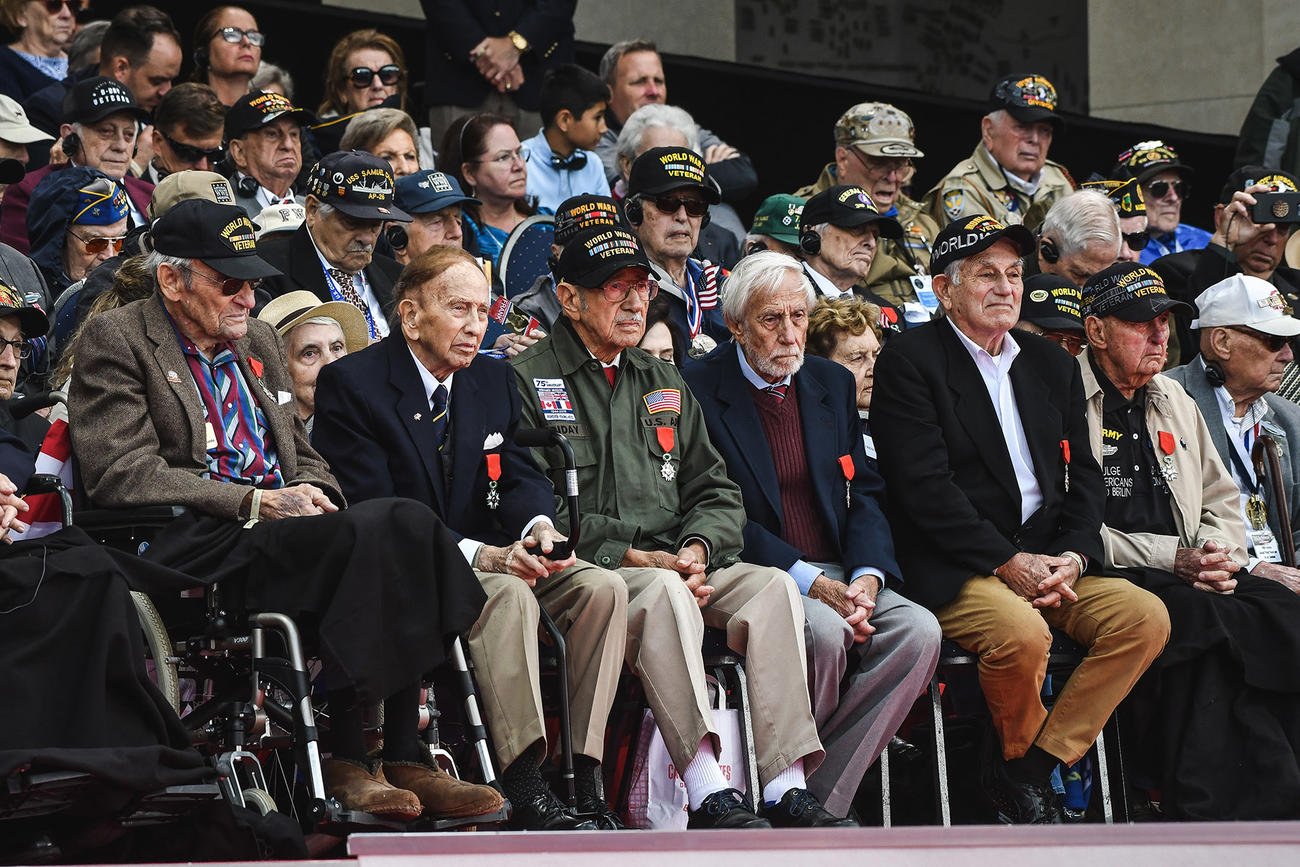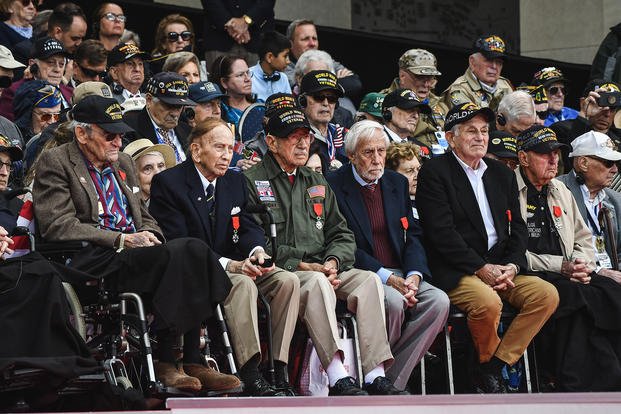

Every day across the nation, an average of 131 U.S. veterans of history’s most consequential war die.
The ranks of 16.4 million Americans who served during World War II were down to 119,550 at the end of last year, including 2,059 in Connecticut, according to the National World War II Museum.
U.S. Sen. Richard Blumenthal, D-Connecticut, who spoke recently in Newtown at a WWII veteran’s 101st birthday celebration, said teachable moments about the fight against Nazi Germany and Imperial Japan have been lost.
“Our kids today know so little history — and even less than their knowledge is their appreciation of the sacrifice necessary to keep our country free,” Blumenthal said in a recent interview.
History can be taught much more vividly and effectively by actual participants, he said, if only more schools would invite veterans into classrooms.
“We’re losing them. We’re losing that teaching moment,” Blumenthal said. “And it’s tragic for the country because it detracts from our democracy if young people fail to appreciate how rare and valuable democracy is.”
Glimpses of War
The Veterans History Project at Central Connecticut State University, part of a federal program that Congress created in 2000, has archived hundreds of interviews with Connecticut veterans from World War I through the recent wars in Afghanistan and Iraq. Of the 800 featured veterans, about half served in World War II, program co-manager Brian Matzke said.
“Every veteran’s story is unique and provides a glimpse into the lived experience of an important historical moment,” Matzke said. “Probably the most valuable parts of these interviews are often the glimpses into the small, everyday experiences — what people felt, the friendships that they had, the meals that they ate, and so on. That’s a very different view of history than what you get reading about dates and troop movements and political speeches.”
State Veterans Affairs Commissioner Ron Welch, who also attended former U.S. Army Sgt. William Petrone’s birthday celebration, said the Battle of the Bulge survivor and his comrades did no less than liberate millions of people from tyranny.
“Our team and I make it a priority to attend as many of these important veteran recognition events as possible across the state and sometimes beyond,” Welch said in a statement sent to Hearst Connecticut. “It’s so important that we pause to respect, honor, and remember our service members, veterans, and families for their significant service and sacrifice that allows us to enjoy the freedoms we have every day in our great state and country.”
Worldwide casualties of the war fought from 1939-45 included 60 million civilians and military personnel killed, including 418,500 Americans, and 25 million wounded. The cost to surviving veterans and their families included lifelong grief and mental anguish. If they were not physically wounded, many men returned from the war with shattered spirits. And as Blumenthal noted, post-war America had little grasp of how to treat psychological ailments stemming from indelible horror.
“Now many of them look back and say, ‘I was just a wreck. I was no good for anything. Got married, divorced. My kids hated me. Now I see I had (post traumatic stress).’ There’s that whole dimension to their story,” he said.
Documenting First-Person History
In a comprehensive, statewide effort more than a century ago, Connecticut solicited personal histories of WWI veterans, including their thoughts on how the war had changed them. In 1919, State Librarian George Godard directed the Department of War Records (which was part of the State Library) to create and send out a four-page service questionnaire to every man and woman who served during the war.
“These questionnaires are one of the most complete, and contemporaneous, accounts of how men and women felt about war,” said Christine Pittsley, special projects curator with the Museum of Connecticut History who led the 100th anniversary commemoration of World War I for the Connecticut State Library.
Meriden native Raymond Joseph Queenin, a private first class in the 102nd Infantry Regiment, wrote that he had been wounded with mustard gas and then hurt his back a few months later after an exploding shell threw him into a trench.
To the question — “If you took part in the fighting, what impressions were made upon you by this experience?” — Queenin answered, “I was scared stiff, but I was afraid to show it. I saw so many killed that I lost all fear of death. My only fear was the thought of how the folks at home would receive notice of my death.”
Ruth Hovey of Rocky Hill was an Army nurse who received France’s Croix de Guerre for remaining at her post during a shelling that killed and wounded several soldiers. Along with the questionnaire, Hovey attached a letter to her mother in which she described the experience.
“If I had had time to think, the sight of our boys shot to pieces and dying on all sides before anything could be done for them would simply have broken my heart, but we simply had no time to think,” Hovey wrote. “We worked mechanically like machines while the rush lasted.”
“This sort of an account from American women serving in France is so rare,” Pittsley said, “and had it not been for George Godard, could have been a story lost to time.”
Matzke said that thoroughly documenting the stories of today’s WWII veterans has been difficult.
“Regrettably,” Matzke said, “we currently have very limited resources to conduct interviews, and in recent years our work has mostly shifted away from conducting interviews to increasing awareness of the interviews that we have. This includes blogging about the stories from our collections and partnering with faculty to try to integrate the interviews into the classroom.”
However, anyone can add a veteran interview to the Veterans History Project, he said, and managers encourage those with family or close friends who served to conduct interviews and submit them.
When he visited Normandy in June on the 80th anniversary of the D-Day invasion, Blumenthal said he spoke to a 101-year-old vet who said he planned to live in France near Omaha Beach so he could be near his friends who never made it home and die with them. Many surviving vets, Blumenthal said, have “a strong ambivalence about living this long and missing their friends who died … It’s a hugely poignant and inspiring story as these guys face death so many years after they faced it on the battlefield.”
President Ronald Reagan in his farewell address to the nation on Jan. 11, 1989, said, “We’ve got to do a better job of getting across that America is freedom — freedom of speech, freedom of religion, freedom of enterprise. And freedom is special and rare. It’s fragile; it needs protection.”
Reagan recounted reading a letter from a young woman to her late father, who had fought on Omaha Beach. “Her name was Lisa Zanatta Henn, and she said, ‘We will always remember, we will never forget what the boys of Normandy did.’ Well, let’s help her keep her word,” Reagan said. “If we forget what we did, we won’t know who we are.”
(c) 2024 Journal Inquirer, Manchester, Conn.
Visit Journal Inquirer, Manchester, Conn. at www.journalinquirer.com
Distributed by Tribune Content Agency, LLC.
© Copyright 2024 Journal Inquirer, Manchester, Conn.. All rights reserved. This material may not be published, broadcast, rewritten or redistributed.
